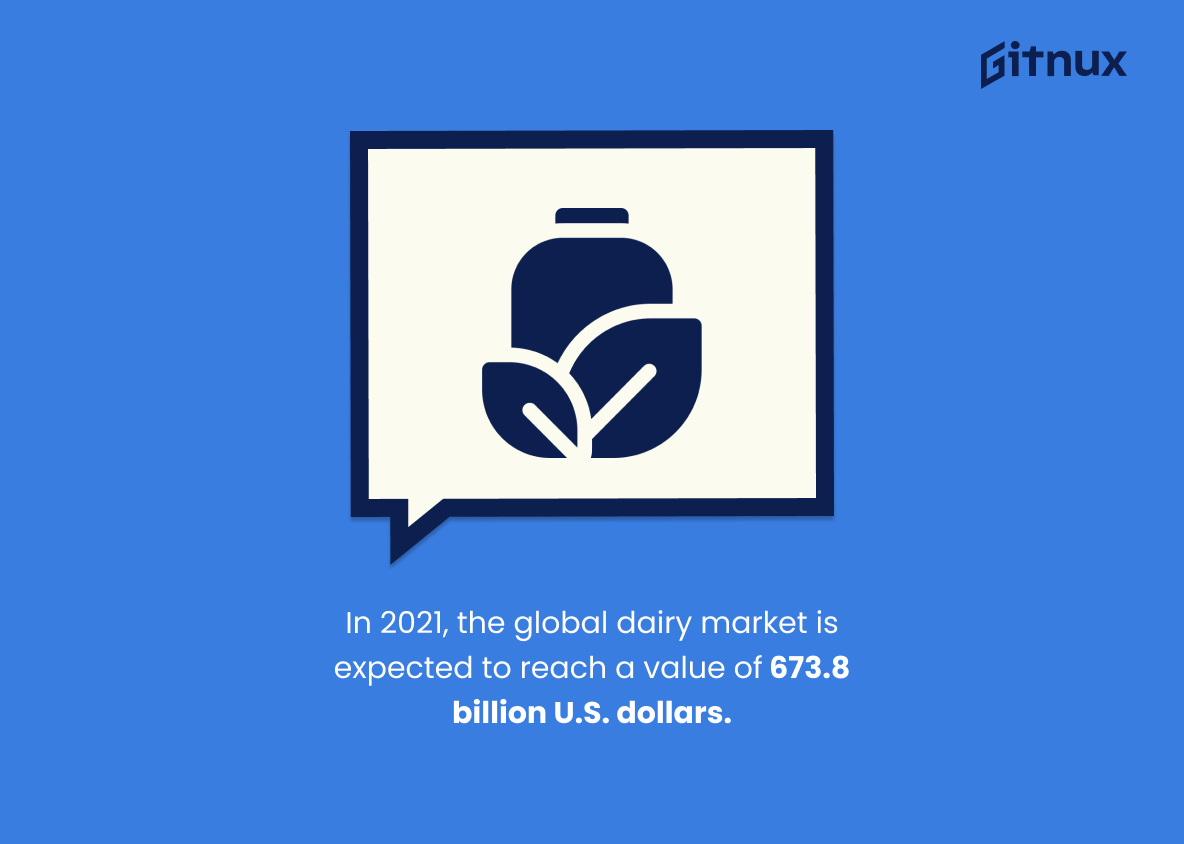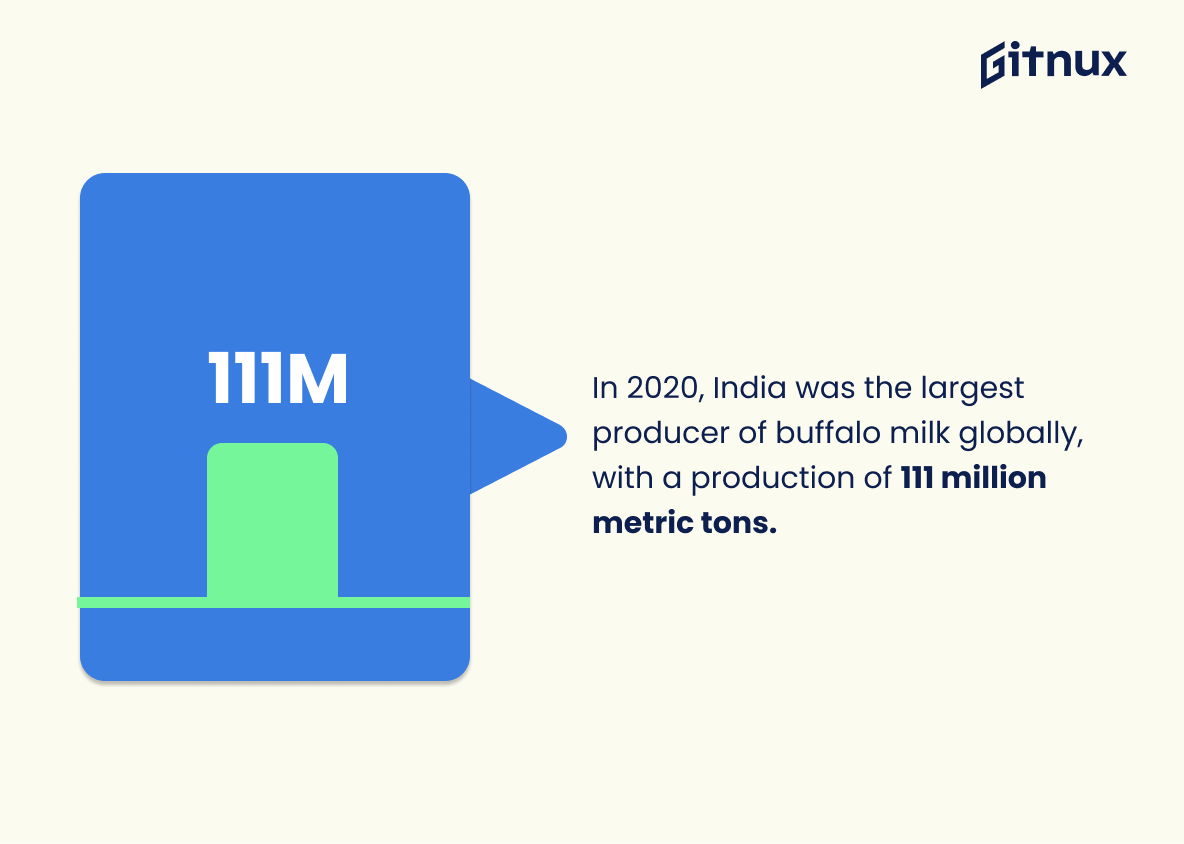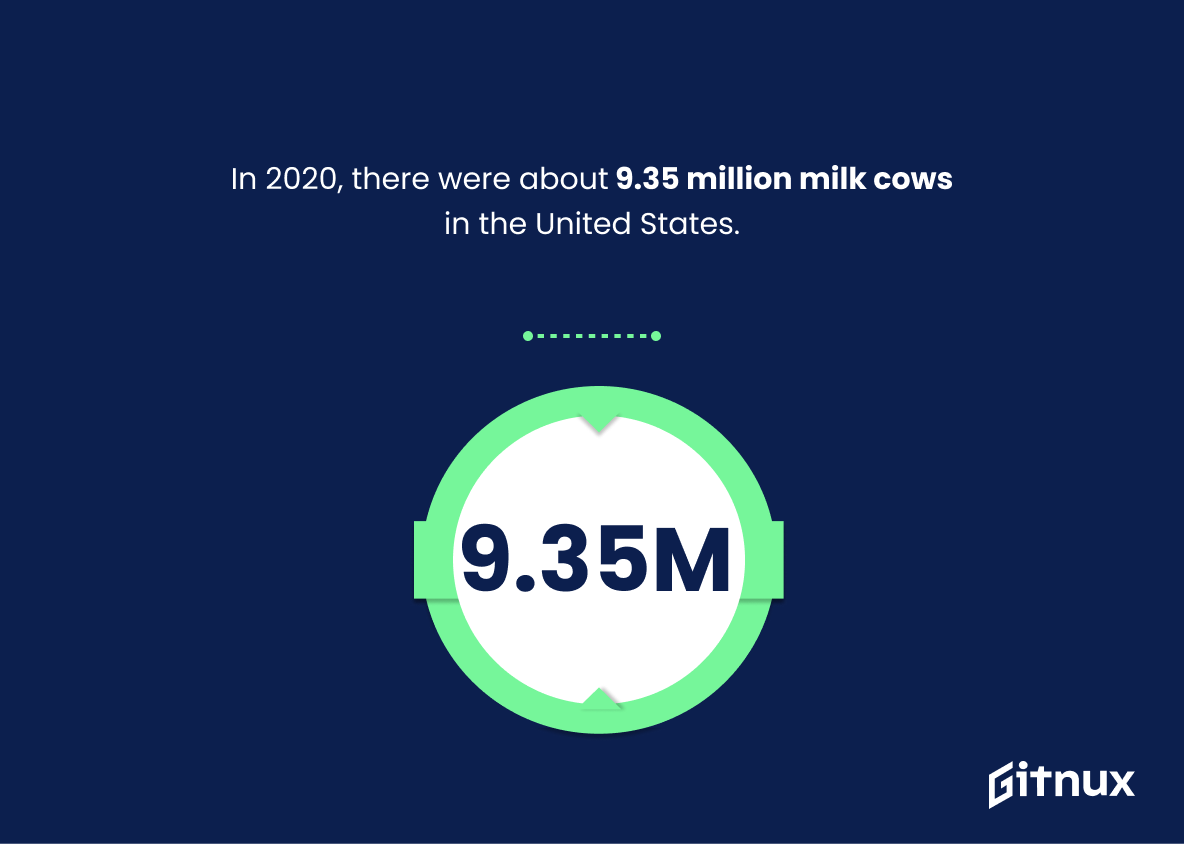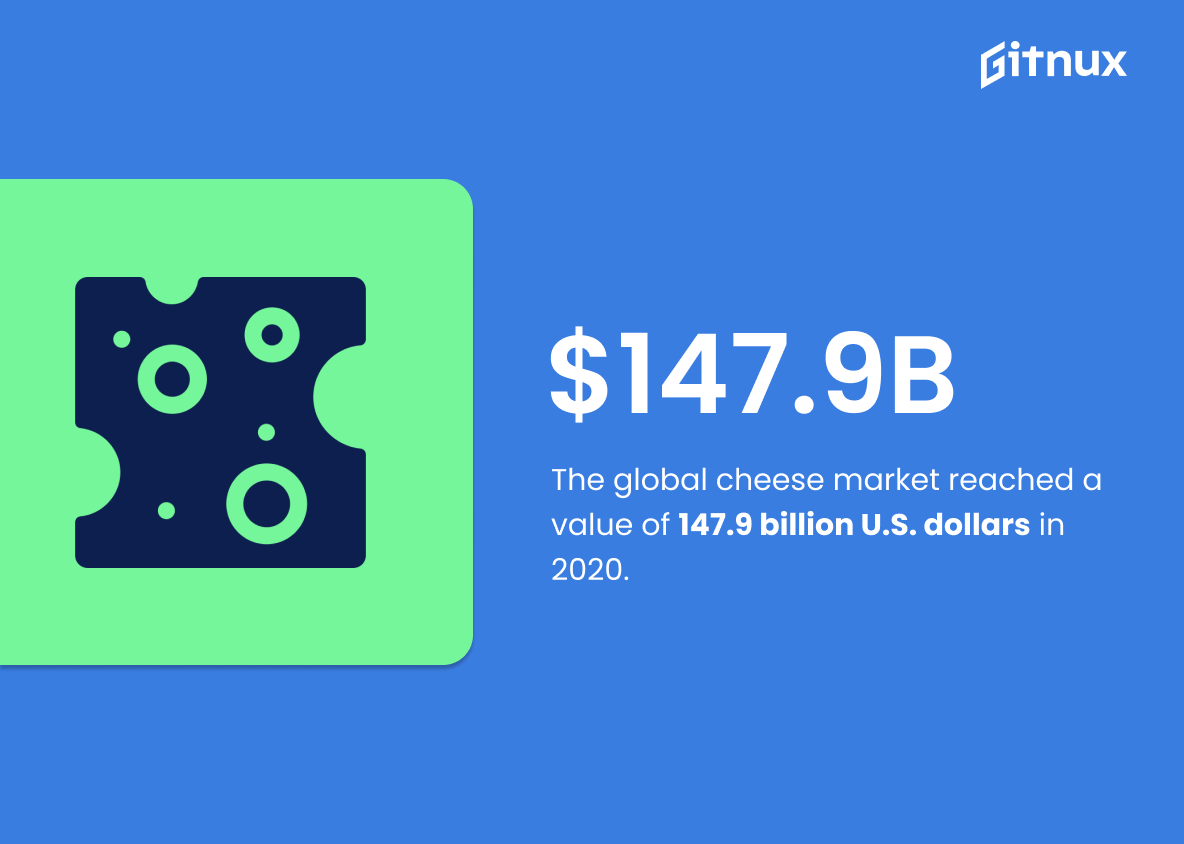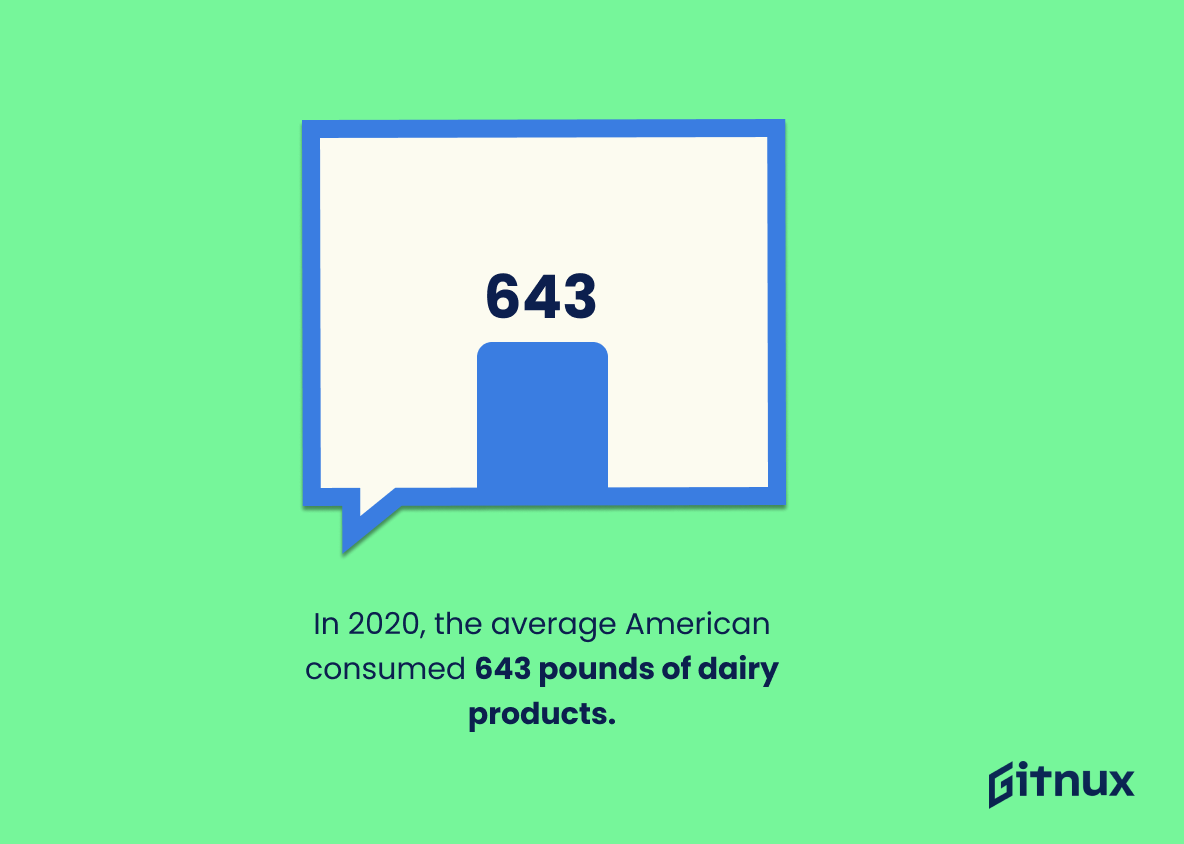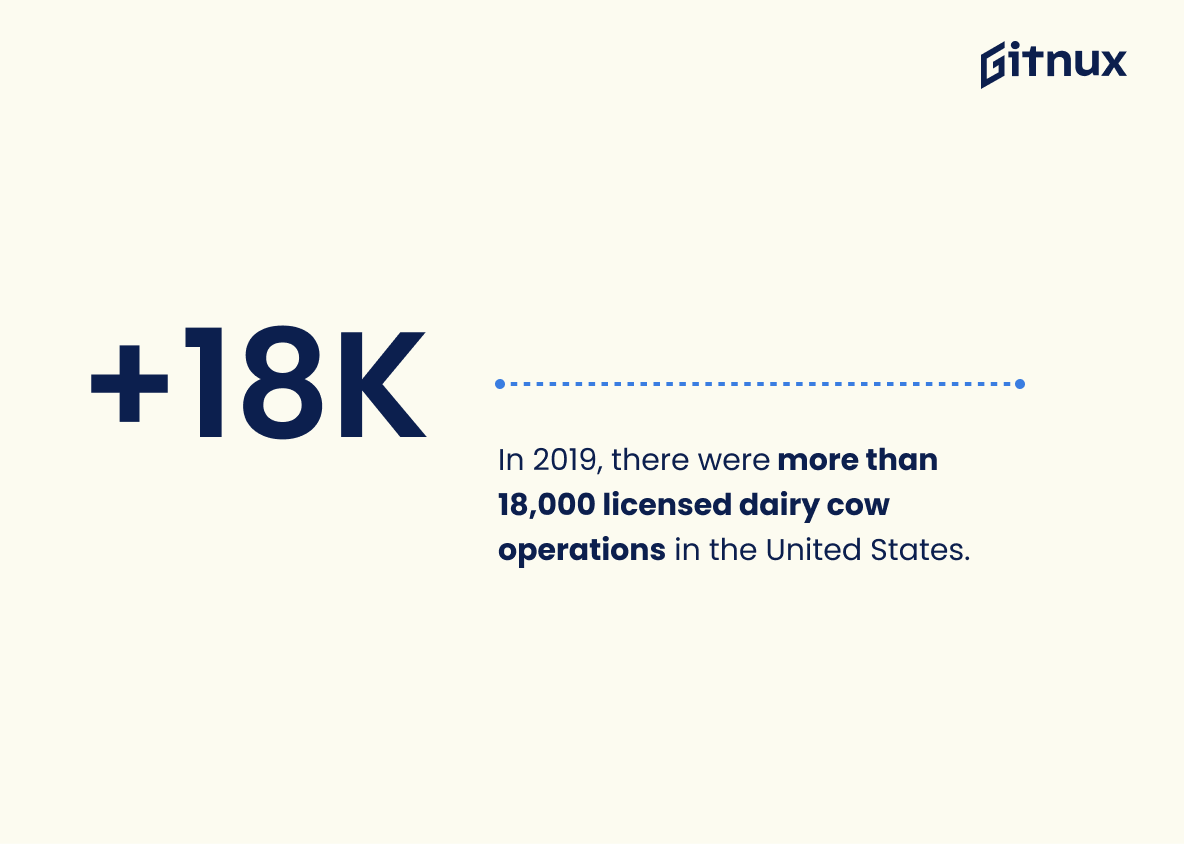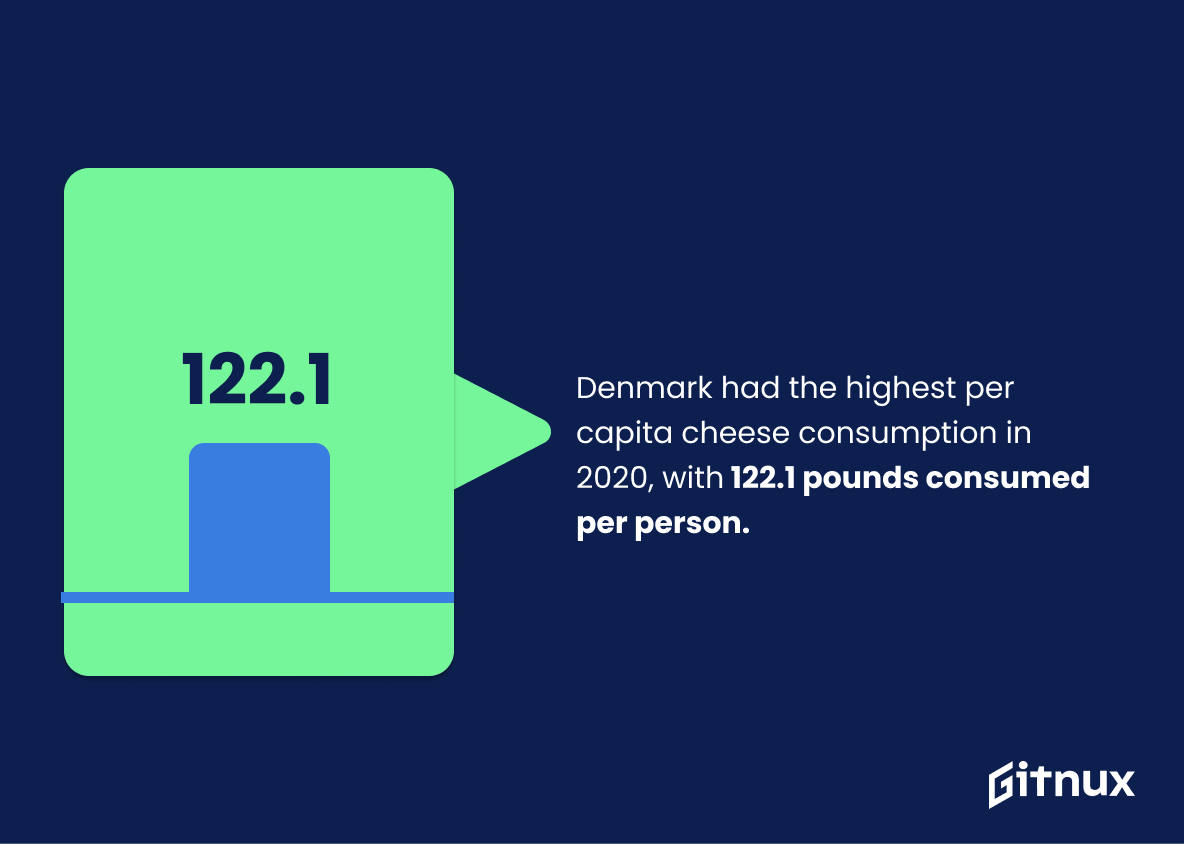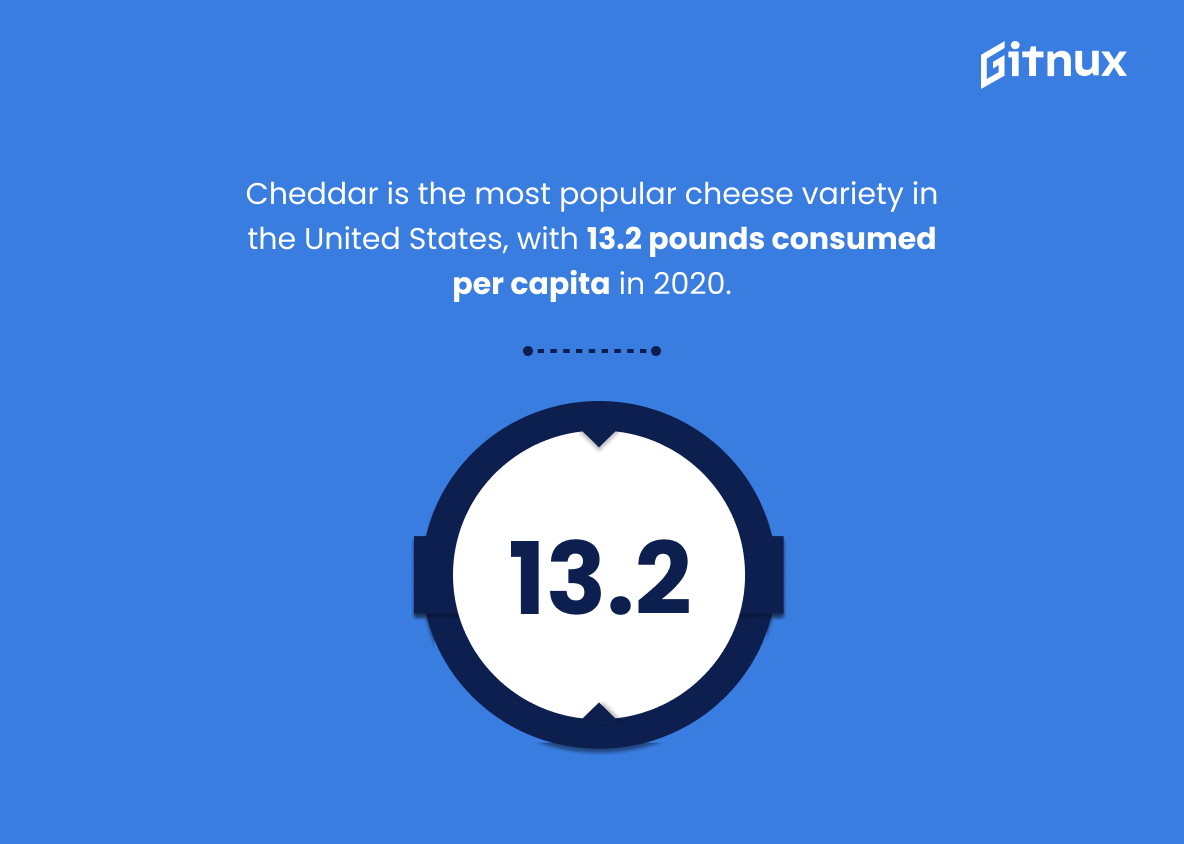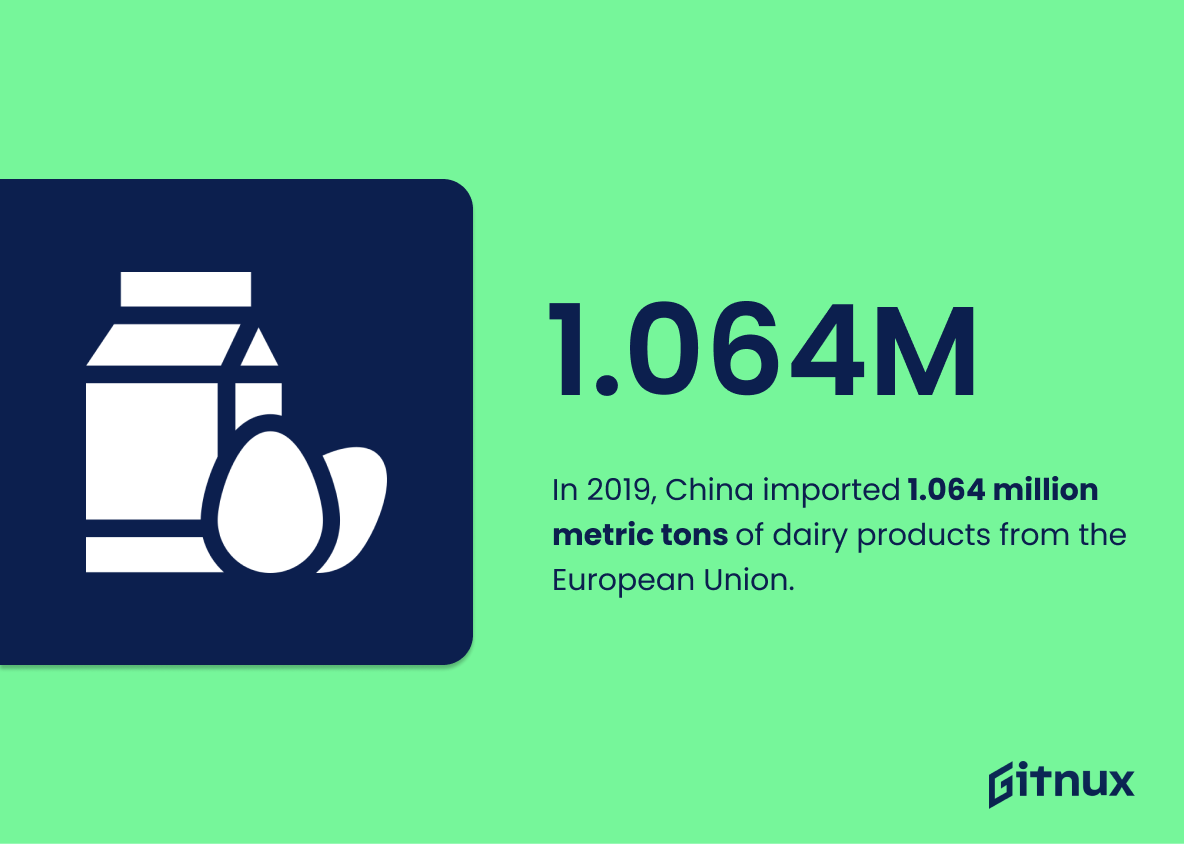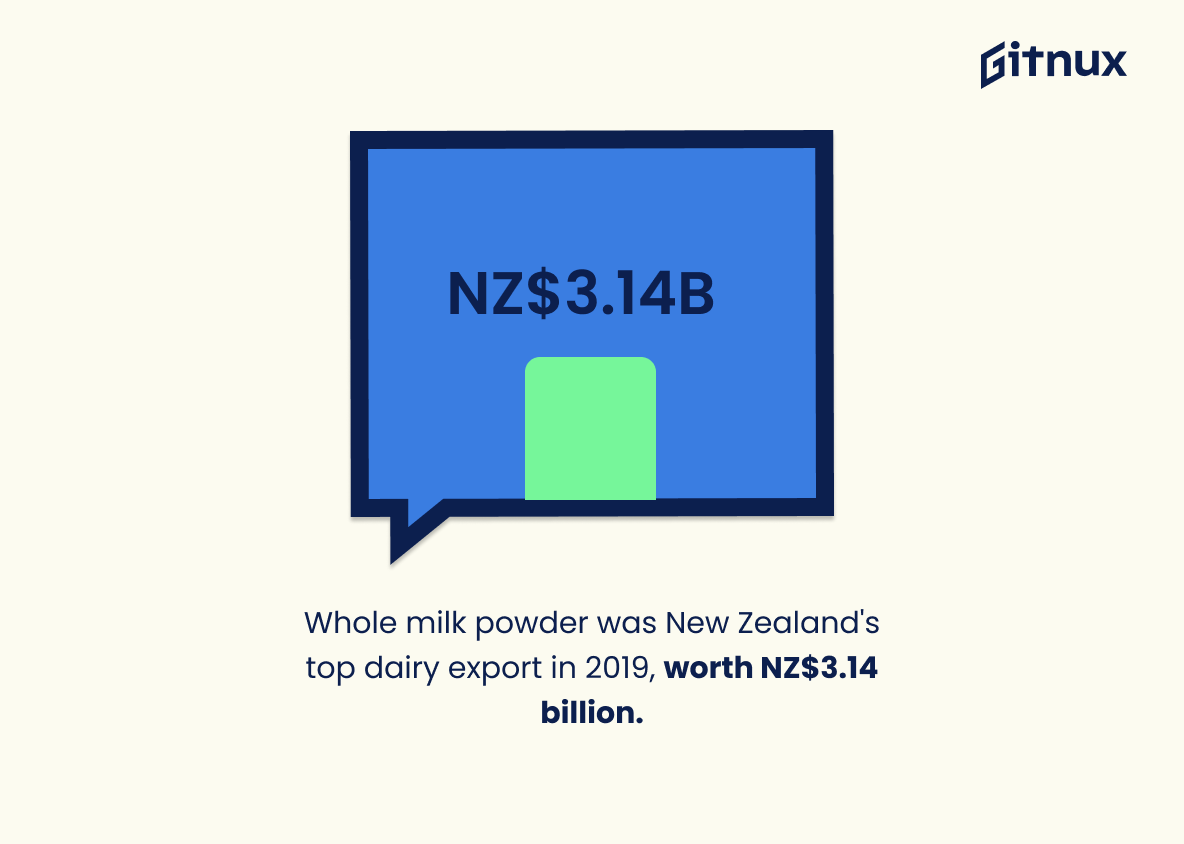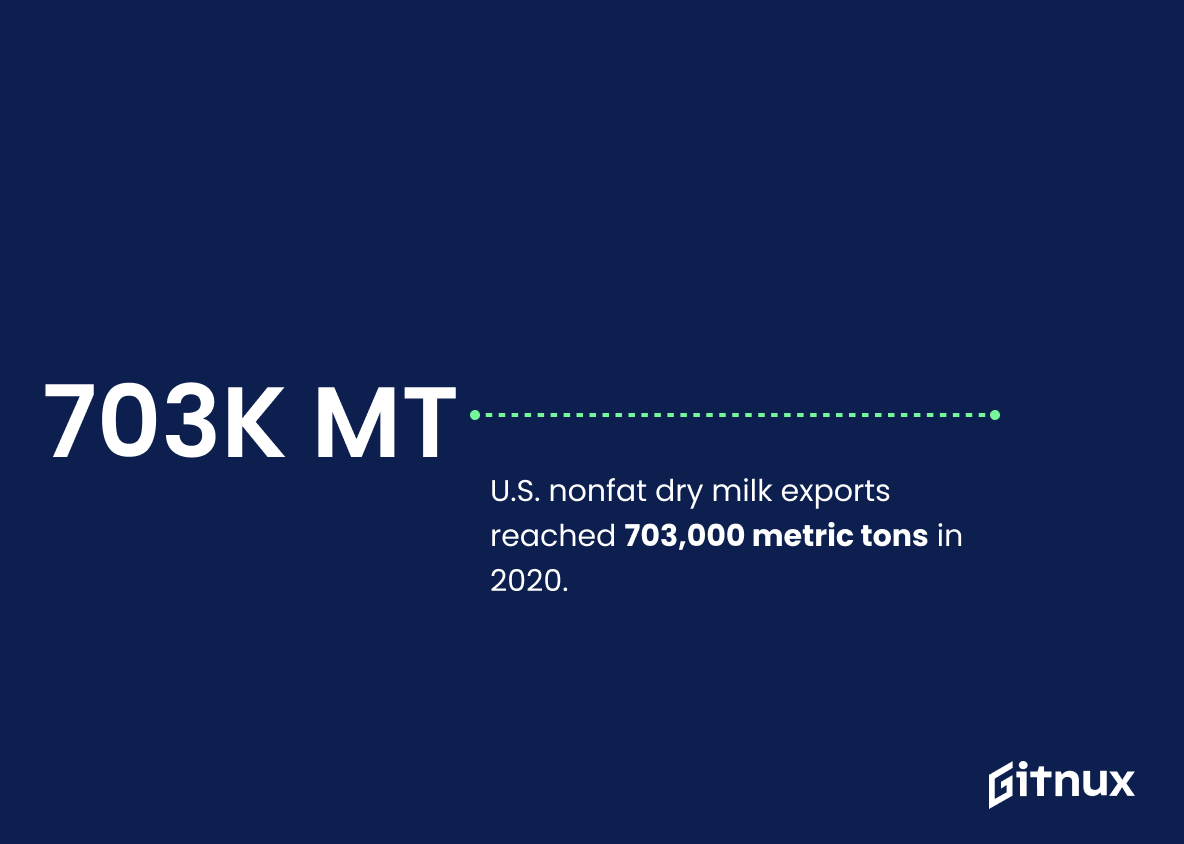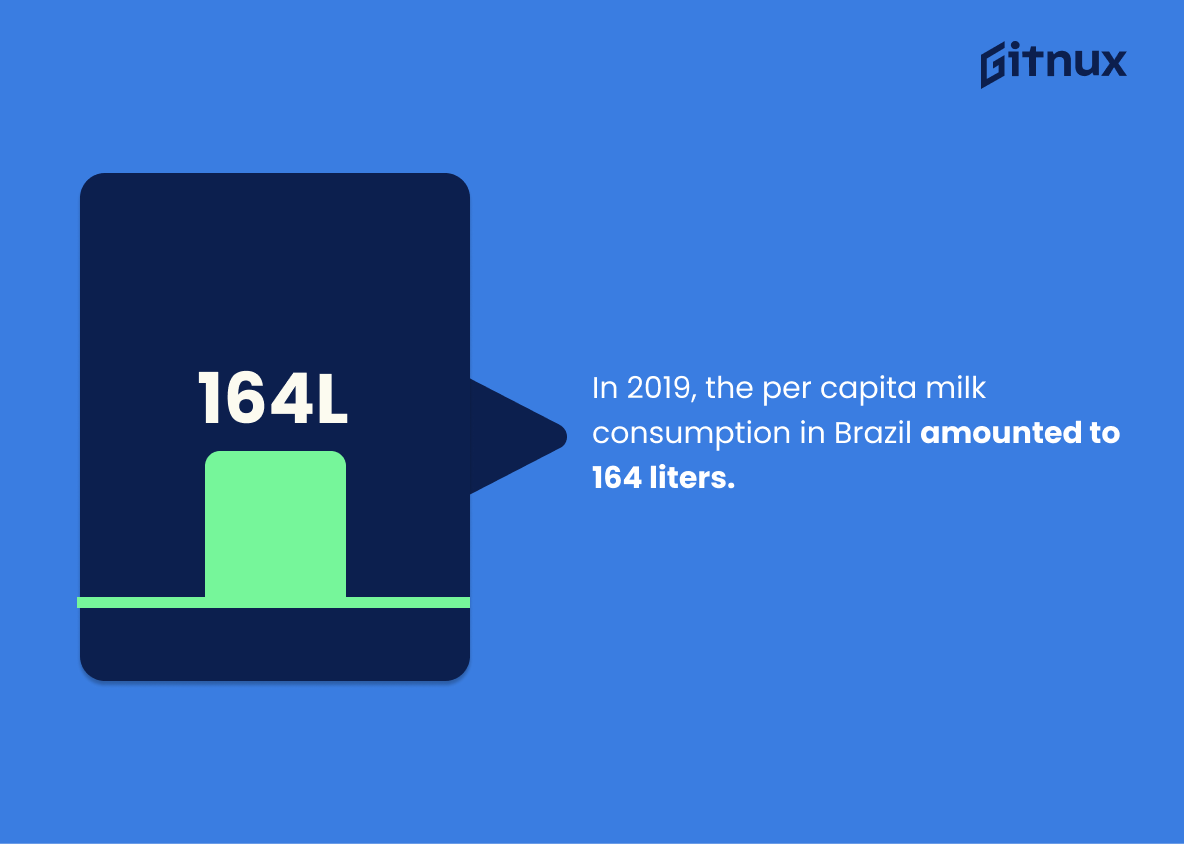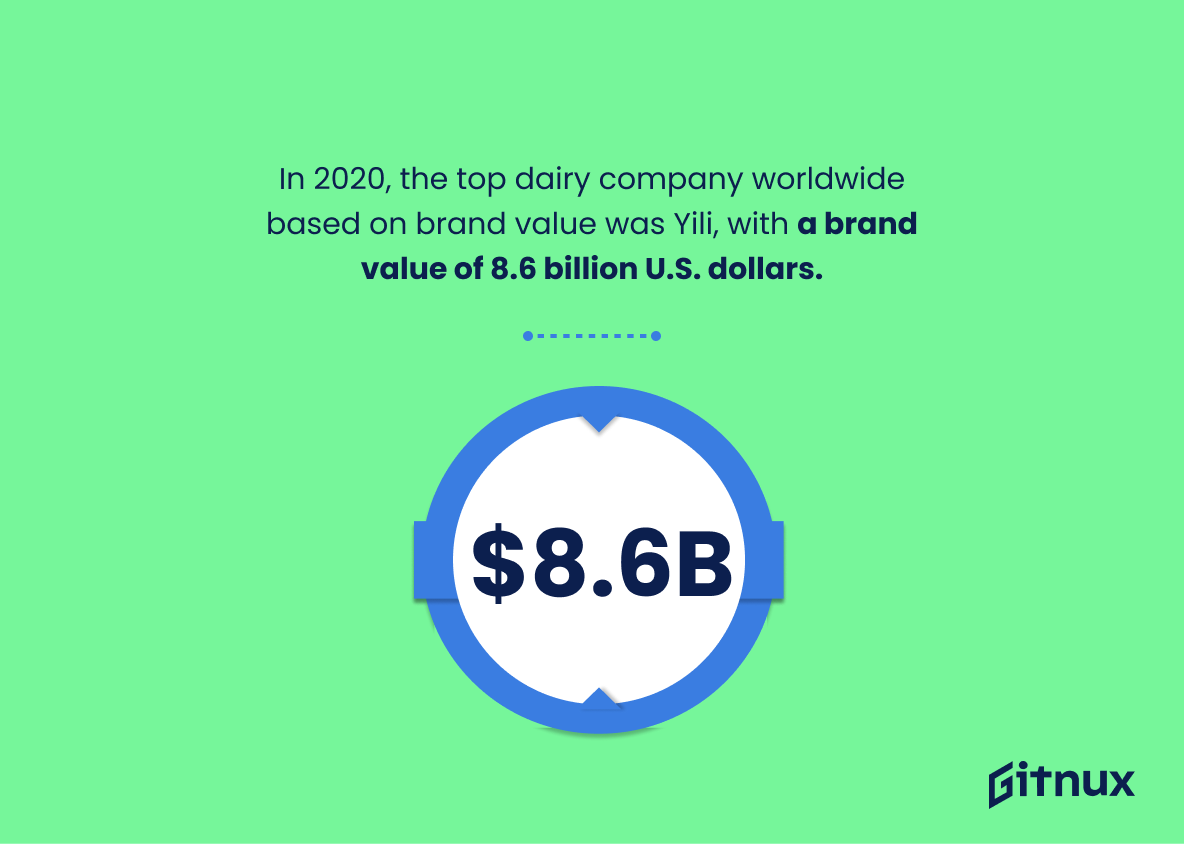The dairy industry is an important part of the global food system, providing essential nutrition to people around the world. In 2020, global milk production amounted to about 906 million metric tons and the United States produced over 222 billion pounds of milk. The European Union was the leading producer of cow milk with a production of 155.64 million metric tons in 2020 while India was the largest producer of buffalo milk globally with 111 million metric tons that same year.
In 2021, it’s estimated that the global dairy market will reach 673.8 billion U.S dollars and New Zealand exported approximately 4.9 billion USD worth of dairy products in 2019 alone. Additionally, there were more than 18 thousand licensed dairy cow operations in America last year and Americans consumed 643 pounds per capita on average when it comes to all types cheese varieties such as cheddar which accounted for 13-2 pounds per person consumption rate in 2020 according to Statista data sources.
Furthermore, Denmark had 122-1 pound per capita cheese consumption rate making them number one worldwide followed by China importing 1-064 million metric tonnes from EU countries during 2019 period; whereas whole Milk Powder exports from New Zealand reached 3-14 Billion NZD value mark during same time frame – not forgetting US nonfat dry Milk Exports reaching 703000 Metric Tonnes back at home soil too. Brazilians also consume 164 liters/person annually whilst Yili brand topped Global Dairy Industry Market Leaders list based on 8-6 Billion USD Brand Value estimation made by Statista experts for this sector during past 12 months or so.
Finally yet importantly enough: between 2021 & 2026 periods Global Dairy Alternatives Market CAGR (Compound Annual Growth Rate) is projected at 11–4% level meanwhile Organic Dairy Market size within USA borders has already exceeded 6–4 Billion Dollars threshold just recently – plus Yogurt Consumption Worldwide hit 13–7 Kilograms Per Capita record high figure throughout entire calendar year 2020 itself…
Dairy Industry Statistics Overview
The European Union is the leading producer of cow milk, with a production of 155.64 million metric tons in 2020.
This statistic is a testament to the European Union’s dominance in the dairy industry. It highlights the sheer magnitude of their production, with 155.64 million metric tons of cow milk produced in 2020 alone. This figure is a clear indication of the EU’s commitment to the dairy industry, and serves as a reminder of their importance in the global market.
In 2021, the global dairy market is expected to reach a value of 673.8 billion U.S. dollars.
This statistic is a testament to the immense potential of the dairy industry. It shows that the dairy market is expected to grow significantly in 2021, indicating that the industry is thriving and has a bright future ahead. This is great news for those involved in the dairy industry, as it means that there is a lot of potential for growth and success. Furthermore, this statistic is a great indicator of the overall health of the dairy industry, as it shows that it is a viable and profitable industry.
New Zealand exported approximately 4.9 billion USD worth of dairy products in 2019.
This statistic is a testament to the success of New Zealand’s dairy industry in 2019. It highlights the impressive export figures achieved by the industry, demonstrating the strength of the sector and its ability to generate significant revenue. This statistic is a key indicator of the health of the dairy industry in New Zealand and provides valuable insight into the industry’s performance.
In 2020, India was the largest producer of buffalo milk globally, with a production of 111 million metric tons.
This statistic is a testament to India’s impressive dairy industry, highlighting its position as the world’s leading producer of buffalo milk. It is a clear indication of the country’s commitment to the dairy industry, and its ability to produce large quantities of milk for the global market. This statistic is an important reminder of the importance of the dairy industry in India, and its potential to continue to be a major player in the global dairy market.
In 2020, there were about 9.35 million milk cows in the United States.
This statistic is a telling indication of the size and scope of the dairy industry in the United States. It demonstrates the sheer number of cows that are producing milk for the country, and the amount of resources that are being devoted to the industry. It is an important statistic to consider when discussing the dairy industry, as it provides a snapshot of the industry’s current state.
The global cheese market reached a value of 147.9 billion U.S. dollars in 2020.
This statistic is a testament to the immense size of the global cheese market, demonstrating the immense potential of the dairy industry. It is a clear indication that the dairy industry is a major player in the global economy, and that it is a lucrative sector for businesses to invest in. This statistic is a valuable insight into the dairy industry, and it is essential for anyone looking to gain a better understanding of the industry.
In 2020, the average American consumed 643 pounds of dairy products.
This statistic is a telling indication of the impact the dairy industry has had on the American diet. It shows that dairy products are a major part of the average American’s diet, and that the dairy industry is a major player in the food industry. This statistic is a powerful reminder of the importance of the dairy industry and its products in the lives of Americans.
In 2019, there were more than 18,000 licensed dairy cow operations in the United States.
This statistic is a testament to the size and scope of the dairy industry in the United States. It shows that there are a significant number of dairy cow operations in the country, indicating that the industry is a major contributor to the economy. Furthermore, it highlights the importance of the dairy industry in providing food and other products to the population. This statistic is an important reminder of the importance of the dairy industry in the United States.
Denmark had the highest per capita cheese consumption in 2020, with 122.1 pounds consumed per person.
The fact that Denmark had the highest per capita cheese consumption in 2020 speaks volumes about the country’s appreciation for dairy products. It is a testament to the success of the dairy industry in Denmark, and a reminder of the importance of dairy products in the country’s culture. This statistic is a powerful indicator of the strength of the dairy industry in Denmark, and a reminder of the importance of dairy products in the lives of its citizens.
Cheddar is the most popular cheese variety in the United States, with 13.2 pounds consumed per capita in 2020.
This statistic is a testament to the immense popularity of cheddar cheese in the United States, highlighting the importance of the dairy industry in the country. It is a clear indication of the demand for dairy products, and the success of the industry in meeting that demand. This statistic is a valuable insight into the current state of the dairy industry in the United States, and is an important factor to consider when discussing the industry’s overall performance.
In 2019, China imported 1.064 million metric tons of dairy products from the European Union.
This statistic is a telling indication of the impact the European Union has had on the dairy industry in China. It shows that the EU has been a major supplier of dairy products to China, providing over a million metric tons of dairy products in 2019 alone. This statistic is a testament to the strength of the EU’s dairy industry and its ability to meet the needs of the Chinese market.
Whole milk powder was the most exported dairy product from New Zealand in 2019, with a value of 3.14 billion New Zealand dollars.
This statistic is a testament to the success of New Zealand’s dairy industry in 2019. It shows that the country was able to export a significant amount of whole milk powder, demonstrating the strength of its dairy industry. This is an important indicator of the industry’s health and provides insight into the potential for future growth.
U.S. nonfat dry milk exports reached 703,000 metric tons in 2020.
The impressive statistic of U.S. nonfat dry milk exports reaching 703,000 metric tons in 2020 is a testament to the strength of the dairy industry. This figure highlights the industry’s ability to meet the demands of the global market, demonstrating its resilience and success.
In 2019, the per capita milk consumption in Brazil amounted to 164 liters.
This statistic is a telling indication of the dairy industry’s presence in Brazil. It shows that the country is consuming a significant amount of milk, which means that the dairy industry is thriving in the country. This statistic is important for understanding the size and scope of the dairy industry in Brazil, and how it is impacting the country’s economy.
In 2020, the top dairy company worldwide based on brand value was Yili, with a brand value of 8.6 billion U.S. dollars.
This statistic is a testament to the success of Yili in the dairy industry, highlighting the company’s impressive brand value of 8.6 billion U.S. dollars. It serves as a reminder of the immense potential of the dairy industry and the success that can be achieved by those who are willing to invest in it. This statistic is also a great starting point for further exploration into the dairy industry, providing insight into the current state of the industry and the opportunities that exist for those looking to make their mark.
Between 2021-2026, the global dairy alternatives market is projected to have a compound annual growth rate (CAGR) of 11.4%.
This statistic is indicative of the growing popularity of dairy alternatives, which is a major trend in the dairy industry. As the demand for dairy alternatives increases, it is likely to have a significant impact on the dairy industry as a whole. This statistic is important for anyone interested in the dairy industry, as it provides insight into the current and future state of the industry.
The organic dairy market’s size in the United States reached about 6.4 billion USD in 2019.
This statistic is a testament to the growing popularity of organic dairy products in the United States. It shows that the demand for organic dairy products is increasing, which is a positive sign for the dairy industry. This statistic is also important because it provides insight into the size of the organic dairy market in the United States, which can be used to inform decisions about investments and strategies in the industry.
Global yogurt consumption in 2020 was approximately 13.7 kilograms per capita.
The fact that global yogurt consumption in 2020 was approximately 13.7 kilograms per capita is a telling indicator of the dairy industry’s success. This statistic speaks to the industry’s ability to meet the demands of consumers, as well as its capacity to produce and distribute yogurt on a global scale. It also serves as a reminder of the importance of dairy products in the diets of people around the world.
Conclusion
The dairy industry is a major contributor to the global economy, with milk production reaching 906 million metric tons in 2020. The United States and European Union are leading producers of cow’s milk, while India leads buffalo milk production. In 2021, the global dairy market is expected to reach 673.8 billion U.S dollars and New Zealand exported 4.9 billion USD worth of products in 2019 alone. On average, Americans consumed 643 pounds of dairy products per capita in 2020 and cheese consumption was highest among Denmark at 122 pounds per person that same year – cheddar being the most popular variety within America itself at 13 pounds per capita for 2020 as well.
China imported 1 million metric tons from Europe while nonfat dry exports reached 703 thousand metric tons from US sources during this period too; Brazil had 164 liters/person consumption rate for 2019 whereas organic markets size hit 6 billion USD by then also. Yili topped all other brands worldwide with 8-6 Billion dollar brand value followed by 11% CAGR growth forecasted between 2021-2026 for Dairy Alternatives Market & Global Yogurt Consumption estimated around 13 Kg/capita respectively.
References
0. – https://www.statista.com

